Google Nexus 4 Review - Google's new Flagship
by Brian Klug on November 13, 2012 8:45 AM EST- Posted in
- Smartphones
- LG
- Android
- Mobile
- APQ8064
- Nexus 4
- Android 4.2
- MDM9215
The Nexus 4 is based around a 1.5 GHz Qualcomm Snapdragon S4 Pro SoC, the quad core Krait APQ8064 with Adreno 320 GPU, which is still built on a 28nm process. The combination of APQ8064 for AP and MDM9x15 for baseband is Qualcomm's Fusion 3 platform, and the Nexus 4 and Optimus G are the first phones to market based on that platform. This is a relatively unique opportunity for Nexus, which until recently wasn't really first to market with the latest and greatest silicon.
A while ago we posted our Nexus 4 and Nexus 10 performance preview. At that point we still had a lot of testing to perform, and many people noted that the Nexus 4 performance was far behind the LG Optimus G despite it being based on the same platform. Later, some people noticed that I had uploaded another set of results from GLBenchmark 2.5 to the online result browser with much better performance. The difference wasn't some over the air software update but rather that I was running some of the tests with the Nexus 4 in a ziplock bag inside the freezer to mitigate any condensation problems, and simultaneously nail down any possible thermal throttling.
I've re-run everything and can confirm obviously that there was thermal throttling going on affecting some of the results, and have included the new results wherever there was a deviation from previous. For those wondering why the LG Optimus G wasn't affected in spite of it having the same platform, the reason is because the results from the Optimus G were run in parts due to some instability affecting its ability to run a complete set of tests without crashing. The Nexus 4 has newer drivers that don't crash during a full GLBenchmark 2.5 run but as a result run the device long enough for thermal throttling to kick in.
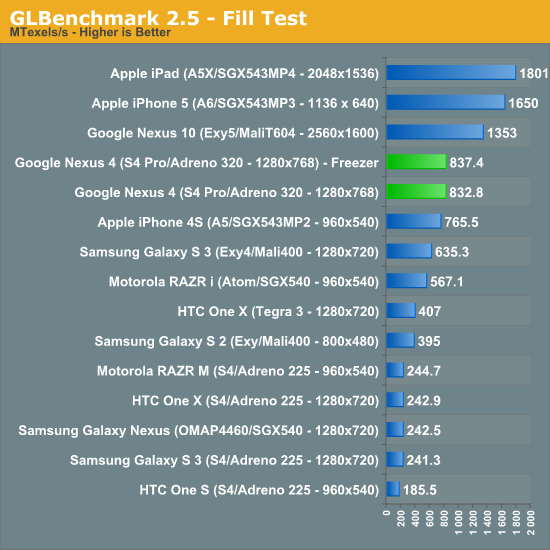
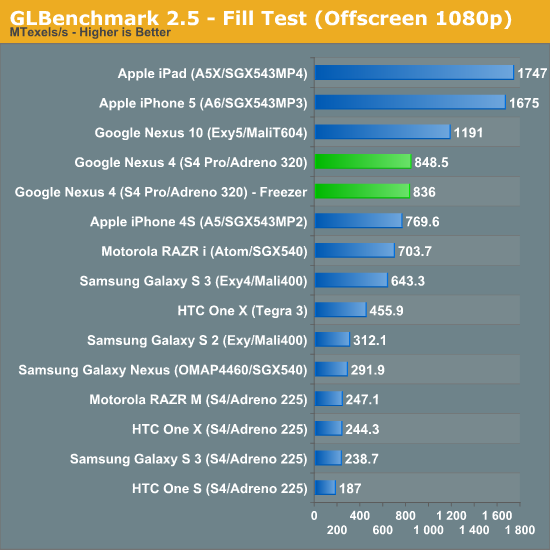
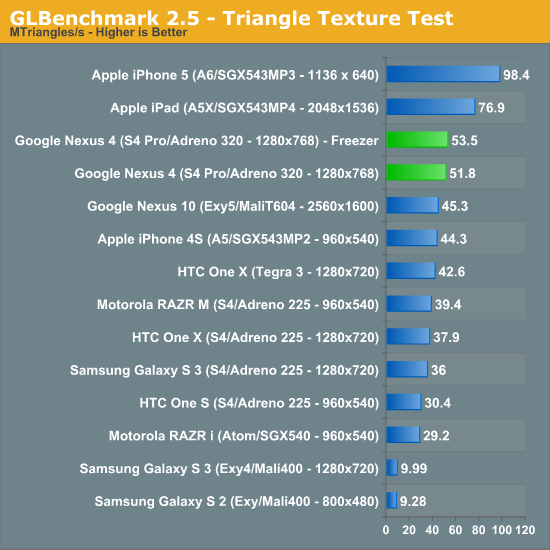
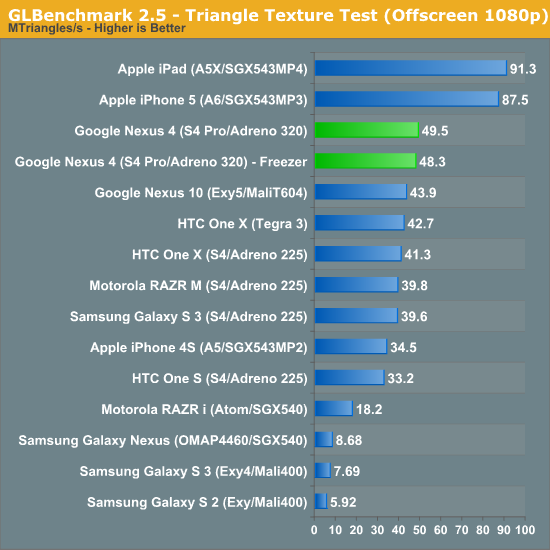
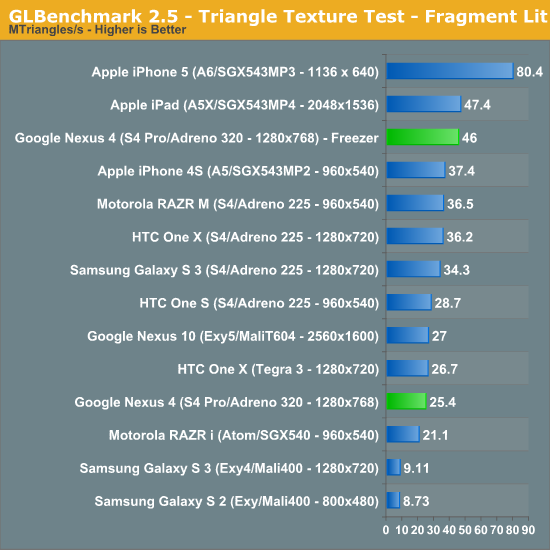
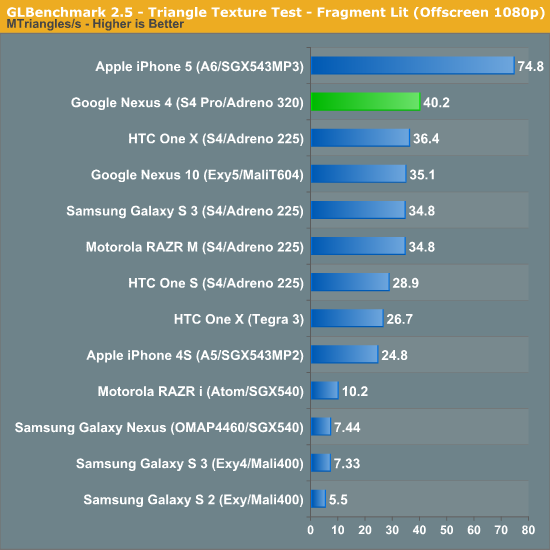
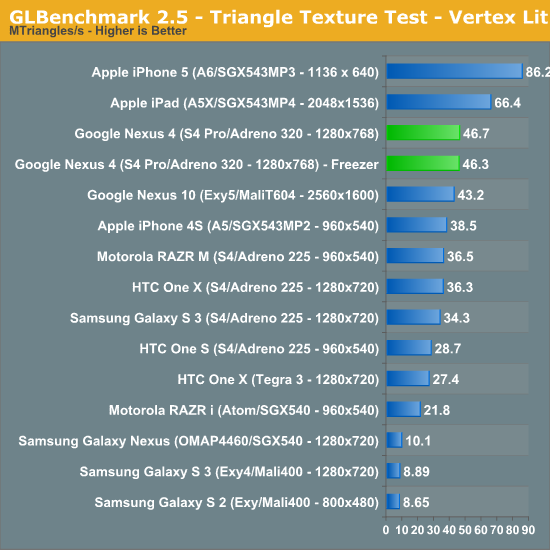
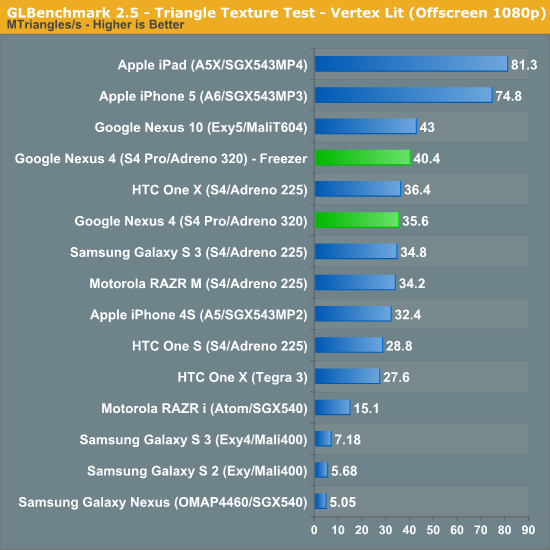
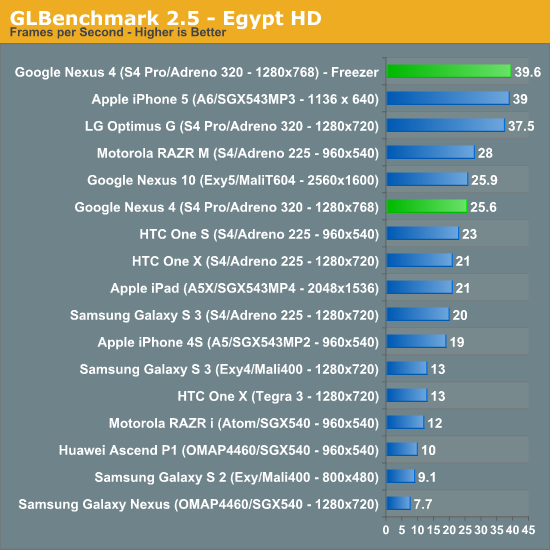
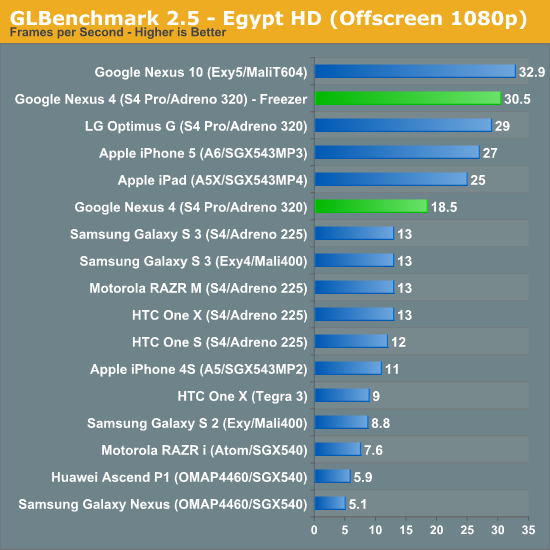
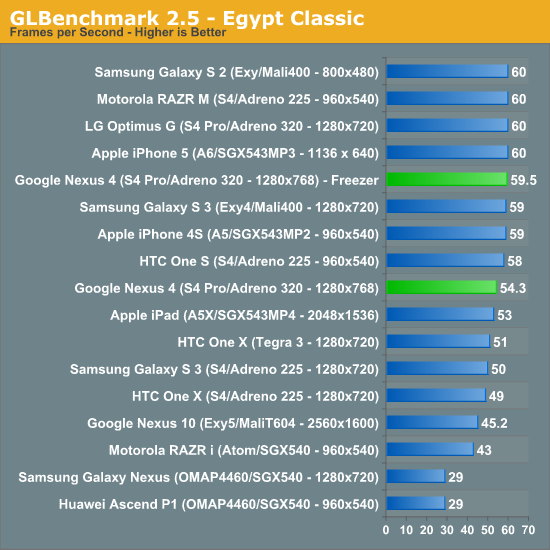
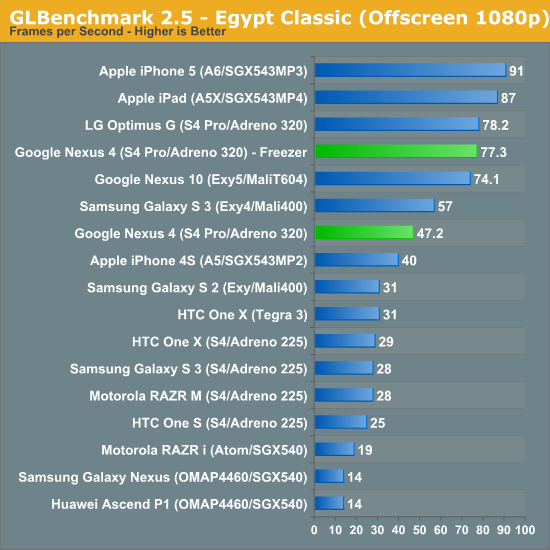
The result of the tests in the freezer results that are much closer to what we'd expect based on the APQ8064 MDP/T runs and the Optimus G numbers I saw in Korea.
When it comes to the CPU side of things there were results also affected by thermal throttling. I spaced some of those runs out (unintentionally) enough that performance didn't change, but for other things it did affect performance. I can't tell what GPU clocks end up being when the SoC decides to throttle, but it is possible to nail down what CPU performance state APQ8064 settles down into when there's throttling going on by looking at the state tables.

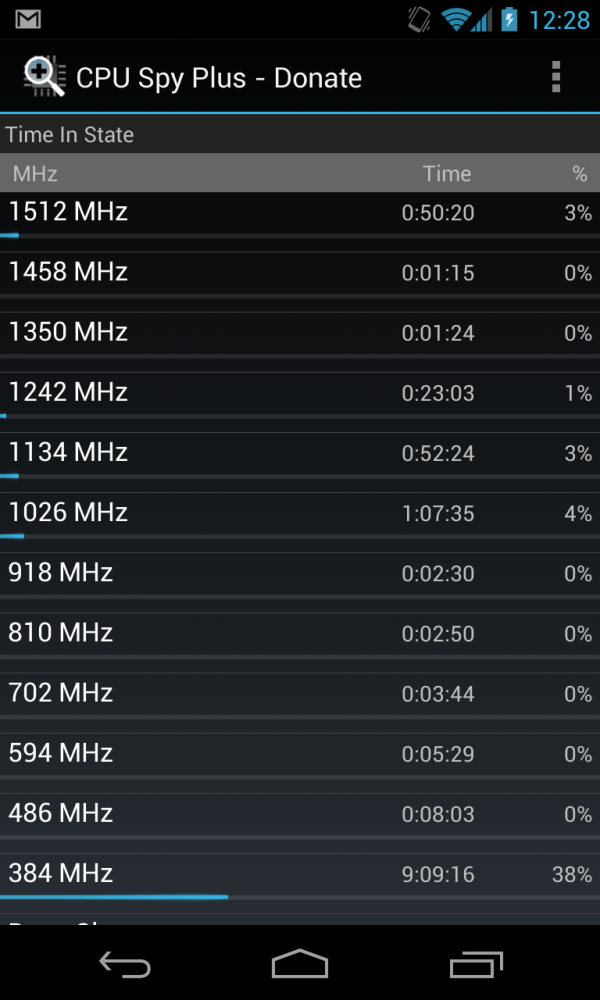
Left - 1.134 GHz during throttling (running tests), Right - All the performance states
I can see the Nexus 4 not use any of the performance states above 1134 MHz when it's getting hot, as shown in the images above. I've tweeted a link to the pastebin for thermald.conf which I believe configures the thermal cutoffs and will be interesting to kernel hackers trying to play with these values.
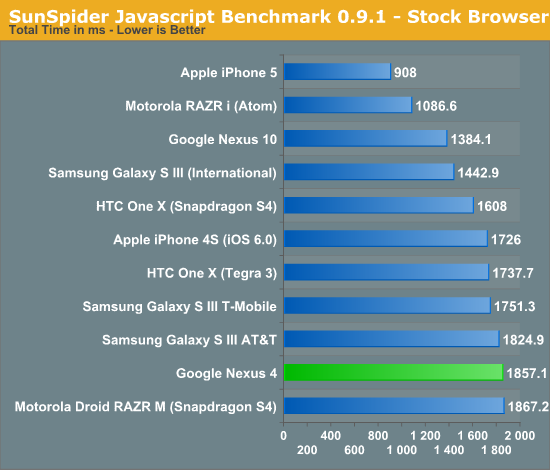
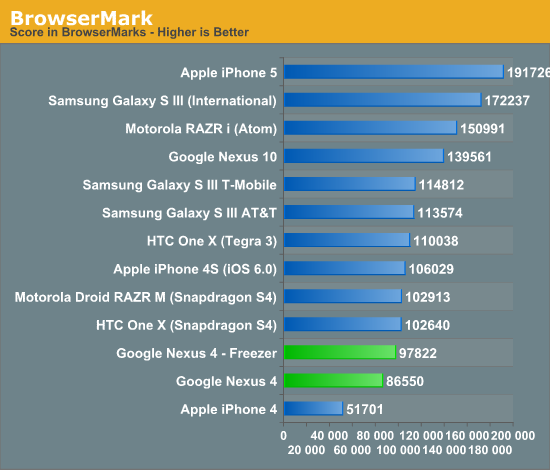
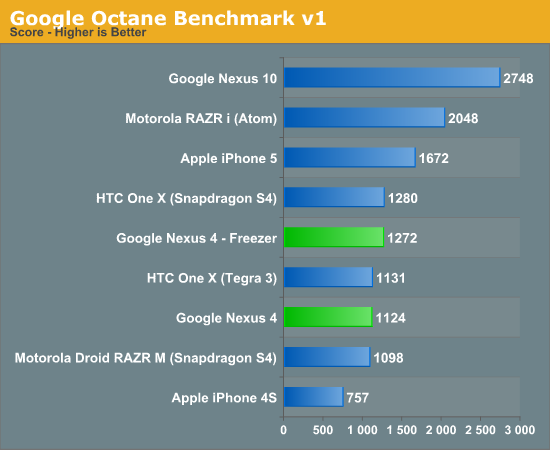
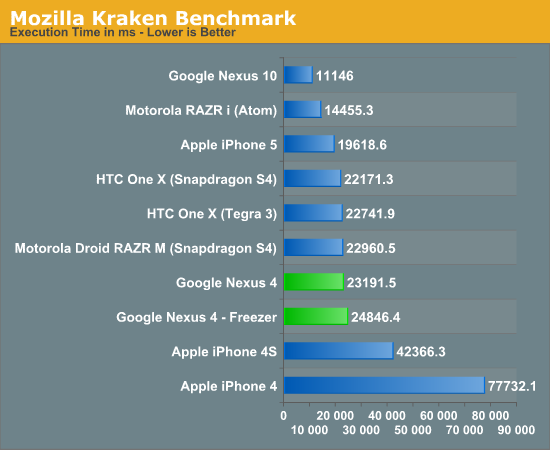
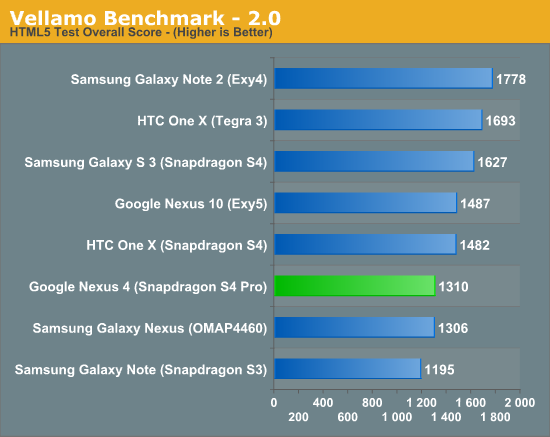
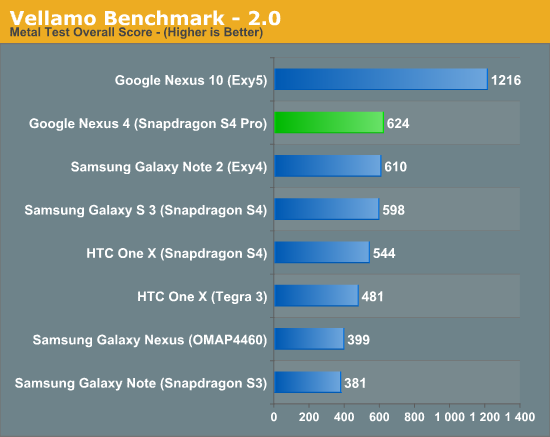
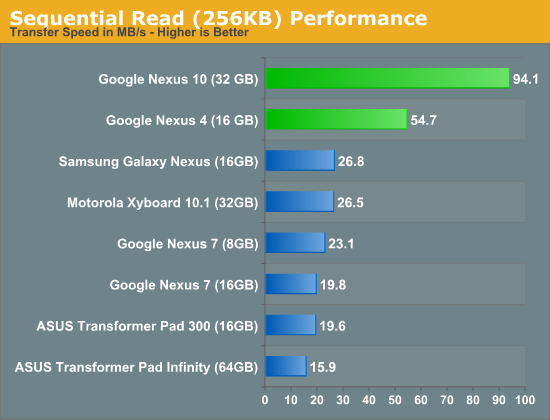
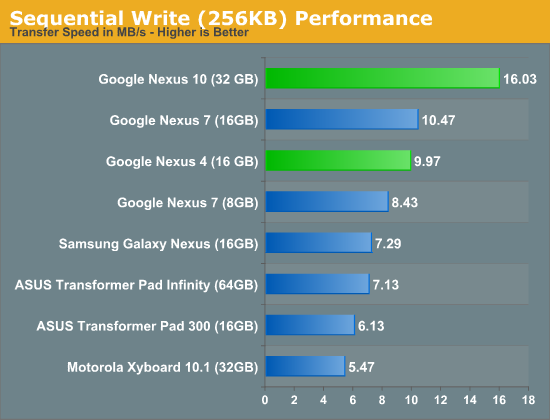
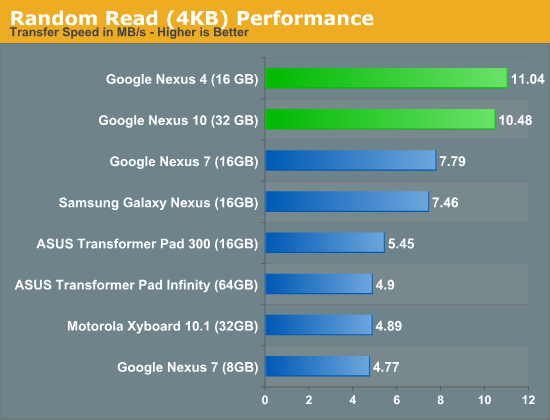
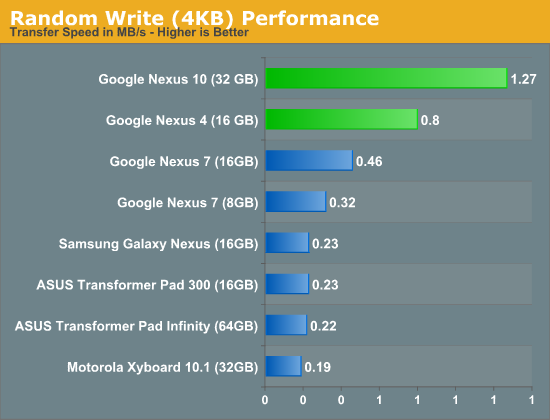
Our CPU performance side is unfortunately still dominated by JavaScript performance tests. The story there is that the Nexus 4 ships with Chrome (and originally shipped with a newer build of Chrome than what was on the market - we were running that updated version all along) and thus the mainline version of the V8 JavaScript engine. OEMs perform their own optimizations to the V8 library, and try to upstream whatever they can into the main project, but in the case of Chrome for Android that means V8 sans secret OEM sauce.










188 Comments
View All Comments
funky247 - Thursday, November 15, 2012 - link
I would like to know this as well. The AOSP browser on my Gnex performs much better than Chrome and I'll be reluctant to get the N4 if I'll be stuck with Chrome.staticx57 - Saturday, November 17, 2012 - link
You can try this:http://forum.xda-developers.com/showthread.php?t=1...
tvdang7 - Tuesday, November 13, 2012 - link
How exactly does this phone get less talktime and wifi hotspot then a gsm galaxy nexus which has like 25% less batter capacity...................I am dissapointed. This s4 pro chipset sucks they should have just stuck with the regular s4 chipset , I don't care about gpu performance.plion - Wednesday, November 14, 2012 - link
so why doesn't the optimus g suffer from thermal throttling? Isn't it pretty much the same insides as a nexus 4?Freedomuser - Wednesday, November 14, 2012 - link
It does suffered, it fall out off the tests suit. They had to do the tests independently.plion - Wednesday, November 14, 2012 - link
ah i see,. thanks for the replythebeastie - Wednesday, November 14, 2012 - link
Just comparing it to other major unlocked phones I can buy http://www.kogan.com/au/shop/phones/Nexus 4 seems like a complete rip off really, With the HTC One-X I can get 32GB of flash for virtually same price and have %50 more battery life and beat the nexus in most CPU benchmarks etc.
http://www.kogan.com/au/buy/htc-one-x-white/
I think they will still sell a lot of these though, the phone market moves too fast for people to notice other phone prices are falling underneath them.
ericbentley - Wednesday, November 14, 2012 - link
I'm just wondering if putting a case on (to protect that glass back, ugh) would hinder or prevent the phone's wireless charging capability.I notice that Google only makes the bumper accessory, which leads me to believe it would be an issue
Anyone have any insight on this?
Freedomuser - Wednesday, November 14, 2012 - link
I read on Qi's standard, now charge up to an inch from the inductive charger. With a case you should be straight. Google's orb is angled, it uses N4's back glass to hold still.kgh00007 - Wednesday, November 14, 2012 - link
Have you ever put an iPhone in the freezer and published the resulting benchmarks, or any other phone for that matter?Something smells funny here! I always thought Anandtech to be impartial before.